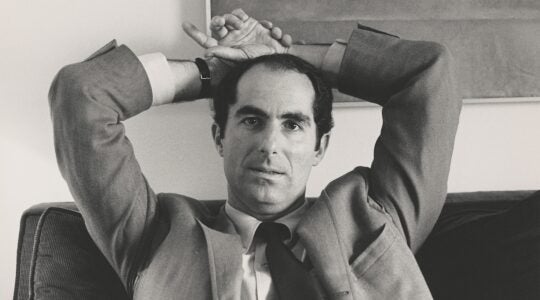I don’t know if you followed the debate last week about and among Jews of color, but — hoo boy. What started out as a dry bit of academic demography turned into an explosive debate over Jewish identity and exclusion.
Here’s the fast version: A 2019 research project led by The Jews of Color Field Building Initiative determined that approximately 12-15 percent of American Jews could be defined as “Jews of color.” Last week the website eJewish Philanthropy published a response, titled “How Many Jews of Color Are There?” Two well-known Jewish demographers, Ira Sheskin and Arnold Dashefsky, put the number at closer to 6 percent, saying the 2019 study overrepresented major metropolitan areas like New York and San Francisco.
Activists, both Jews of color and their allies, were furious. An online protest letter said the article “illustrates how racism drives Jews of Color away from Jewish communal life — by judging or devaluing their place in the community.” April Baskin, who formerly directed diversity and outreach efforts at the Union for Reform Judaism, tweeted, “Questioning our numbers in a time of scarcity is a shameful power play.” Tema Smith, writing in The Forward, charged that the authors glossed over “methodological concerns” in the demographic studies they relied on for their analysis.
One of the angriest responses came from Rabbi Rick Jacobs, president of the URJ, and a colleague there, Chris Harrison. “Articles like Sheskin and Dashefsky’s are indicative of the fear that resides in many white-dominated spaces and are reactionary to the work that organizations like ours seek to do: the work of disrupting oppression within our communities, addressing unearned power and privilege, and acknowledging our actual Jewish diversity,” they wrote.
In his responses at eJewish Philanthropy, Sheskin appears genuinely baffled that his article attracted so much animus. He said he was only sharing numbers that came from the Pew Research Center in 2013. “It does not mean that we do not support inclusivity. We do,” he wrote. “It does not mean that we are racists. We are not. If you think there is something wrong with the 6%, call Pew. We just reminded people that that is what Pew said. We did not come up with our own number. We simply reported a number from a reliable source.”
There is a lot going on here. On one side is the wonky work of Jewish demography, which is a bit of a Jewish obsession. Numbers help determine the distribution of millions of dollars in charitable giving. Demographers like Sheskin are in high demand by communities trying to figure out how to set their priorities, serve the underserved and spend their money wisely.
Many Jews of color, meanwhile, insist that studies conducted by white, typically Ashkenazi Jews reflect the biases of their authors, and systematically under-represent the Jewish community’s diversity. At a time when Jews with African-American, Hispanic and Asian backgrounds are seeking acceptance and respect within Jewish communities, many readers argued, the article sent the message that they literally do not count.
It also didn’t help that the article landed in the middle of the coronavirus crisis, with the toll of the illness falling disproportionately on African-Americans and Hispanics. Groups representing Jews of color, like the Boston-based Dimensions, are concerned the data could be used to suggest that racial disparities aren’t a “Jewish” problem.
I feel for Sheskin and Dashefsky, who I think genuinely believed they were contributing important data to a community conversation and didn’t intend to marginalize anybody. As they were careful to write in their original article, “responsible planning by the American Jewish community demands recognition that not all Jews are of Eastern Europe and Ashkenazi origin; and future research on American Jews needs to be sensitive to discerning Jews of Color.” They didn’t deserve to be charged by Jacobs and Harrison with “white intellectualism intended to diminish research conducted by and about Jews of Color” (emphasis added).
As a journalist I want to report the most accurate numbers; studies and surveys should never be taken at face value. We also need to be on the lookout for “solution aversion,” when people reject scientific or academic evidence if it is tied to a finding they don’t like.
But journalists, like pollsters, have their own biases, conscious and otherwise. As a white Ashkenazi Jew, I have had a steep learning curve in understanding the concerns of Jews of color. Questions I would normally consider well-meaning or innocuous — including “What’s your Jewish story?” — can sound like a challenge to someone who is conscious of being in the minority. As Allison Barnes put it in a recent Kveller essay, “What Not to Say to Jews of Color — and What to Say Instead,” such questions “can feel like a really aggressive interview for a job you don’t even want.”
Writing about last week’s controversy, Marc L. Dollinger of San Francisco State University warned fellow Jewish communal researchers, “We need to open ourselves up to the possibility that our otherwise solid academic work plays out differently in the real world than we initially imagined. When we write about numbers, we are writing about people. And when our writing causes even unintended harm, we need to rethink our assumptions.”
This debate over counting Jews of color is an opportunity not to opine but to listen.
The New York Jewish Week brings you the stories behind the headlines, keeping you connected to Jewish life in New York. Help sustain the reporting you trust by donating today.





